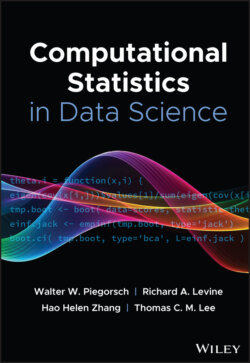Читать книгу Computational Statistics in Data Science - Группа авторов - Страница 53
3.8 MATLAB, GNU Octave
ОглавлениеMATLAB began as FORTRAN subroutines for solving linear (LINPACK) and eigenvalue (EISPACK) problems. Cleve Moler developed most of the subroutines in the 1970s for use in the classroom. MATLAB quickly gained popularity, primarily through word of mouth. Developers rewrote MATLAB in C during the 1980s, adding speed and functionality. The parent company of MATLAB, the Mathworks, Inc., was created in 1984, and MATLAB has since become a fully featured tool that is often used in engineering and developer fields where integration with sensors and controls is a primary concern.
MATLAB has a substantial user base in government, academia, and the private sector. The MATLAB base distribution allows reading/writing data in ASCII, binary, and MATLAB proprietary formats. The data are presented to the user as an array, the MATLAB generic term for a matrix. The base distribution comes with a standard set of mathematical functions including trigonometric, inverse trigonometric, hyperbolic, inverse hyperbolic, exponential, and logarithmic. In addition, MATLAB provides the user with access to cell arrays, allowing for heterogeneous data across the cells and creation analogous to a C/C. MATLAB provides the user with numerical methods, including optimization and quadrature functions.
A highly similar yet free and open‐sourced programming language is GNU Octave. Octave offers many if not all features of the core MATLAB distribution, although MATLAB has many add‐on packages for which Octave has no equivalent, and that may prompt a user to choose MATLAB over Octave. We caution analysts against using MATLAB/Octave as their primary statistical computing solution as MATLAB's popularity is diminishing [4] – likely due to open‐source, more fully featured competitors such as R and Python.
